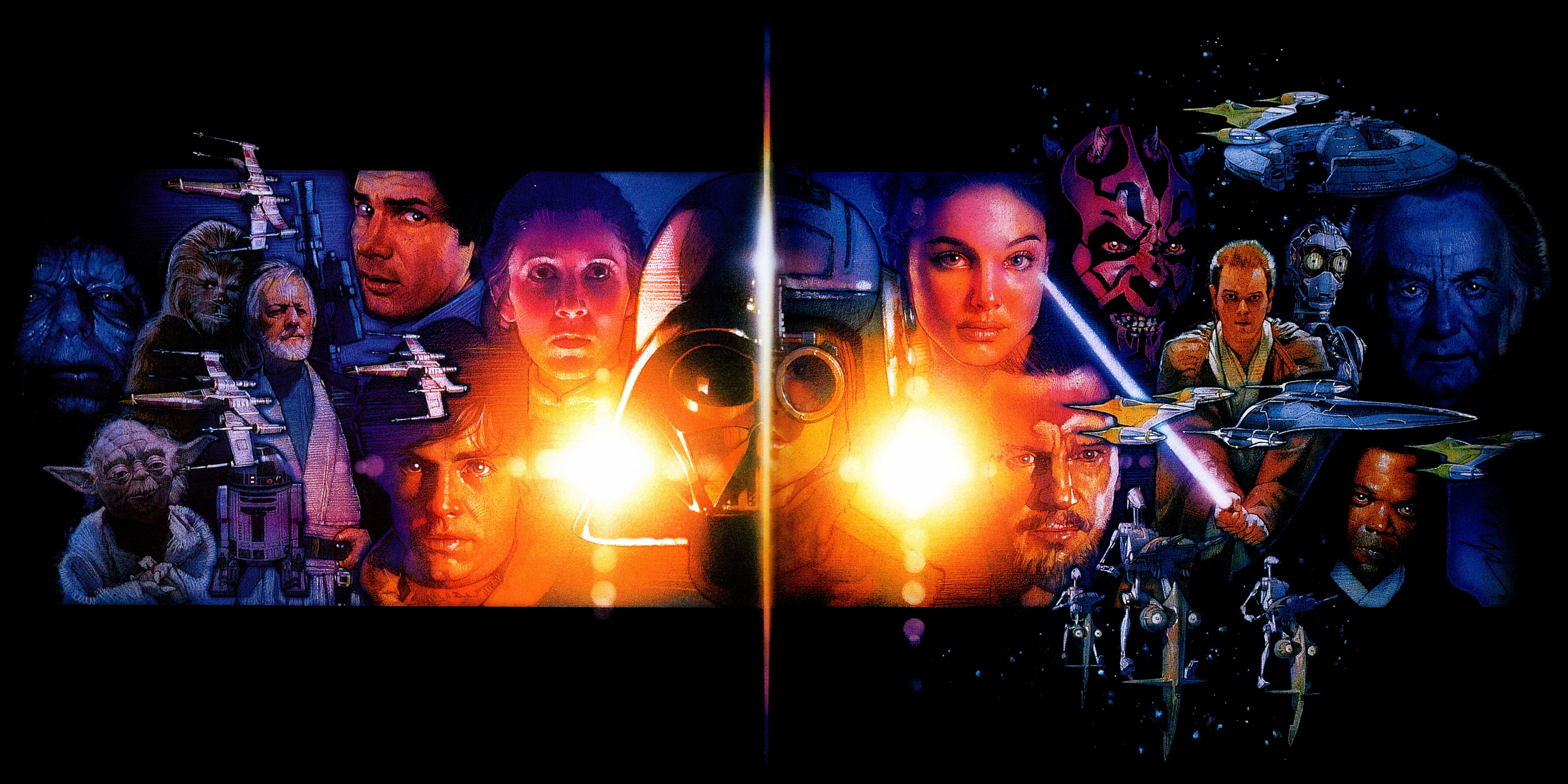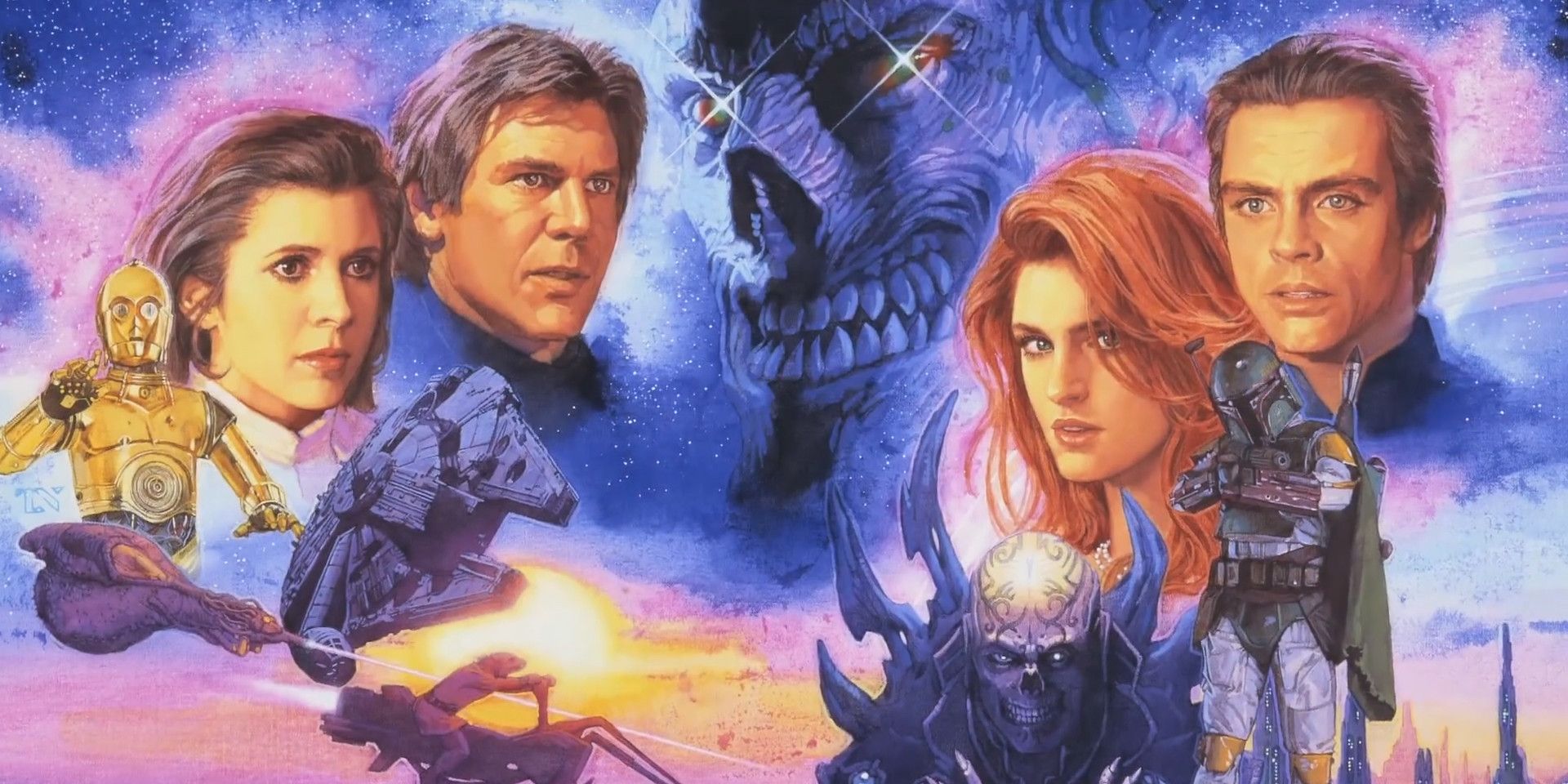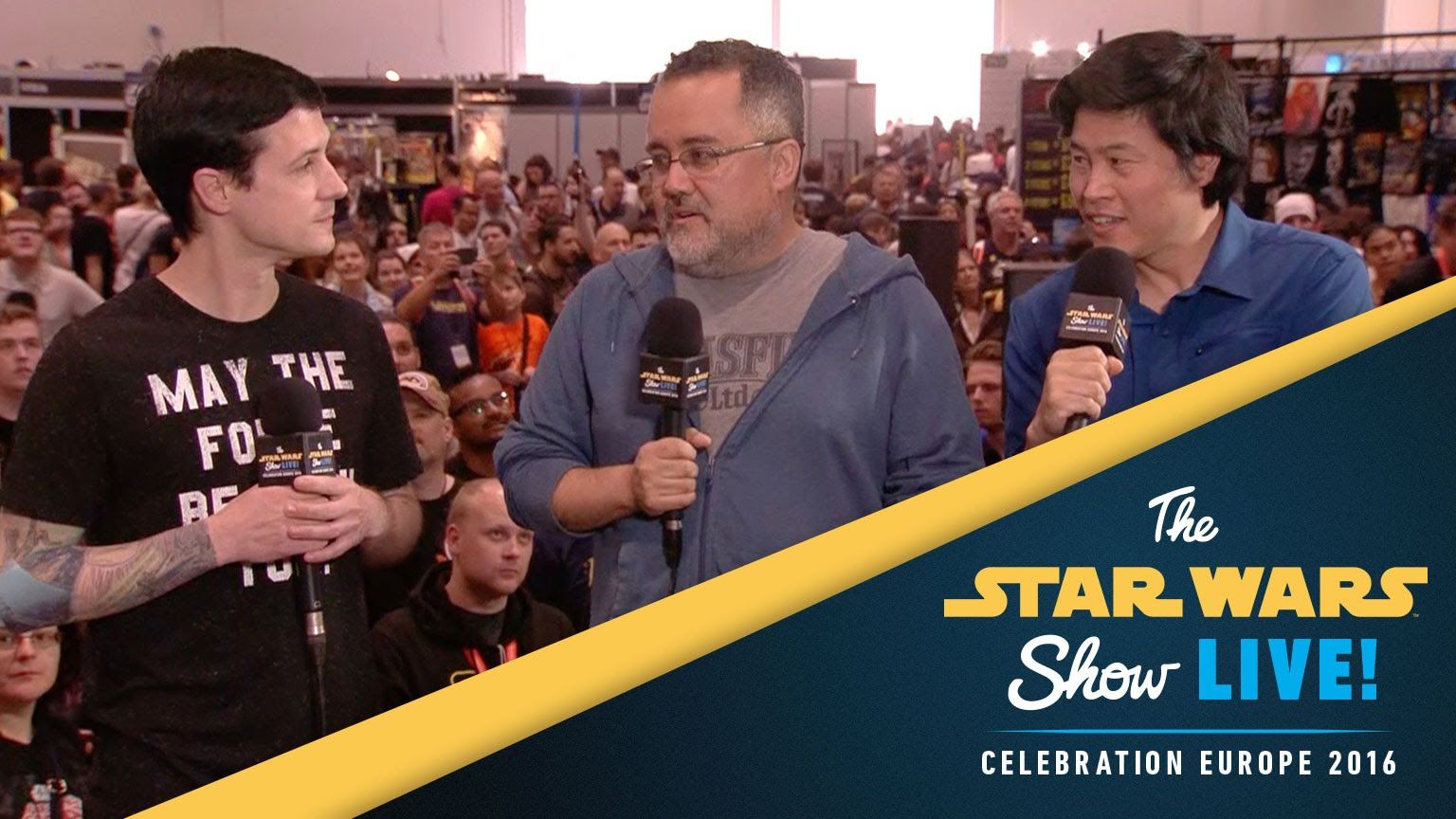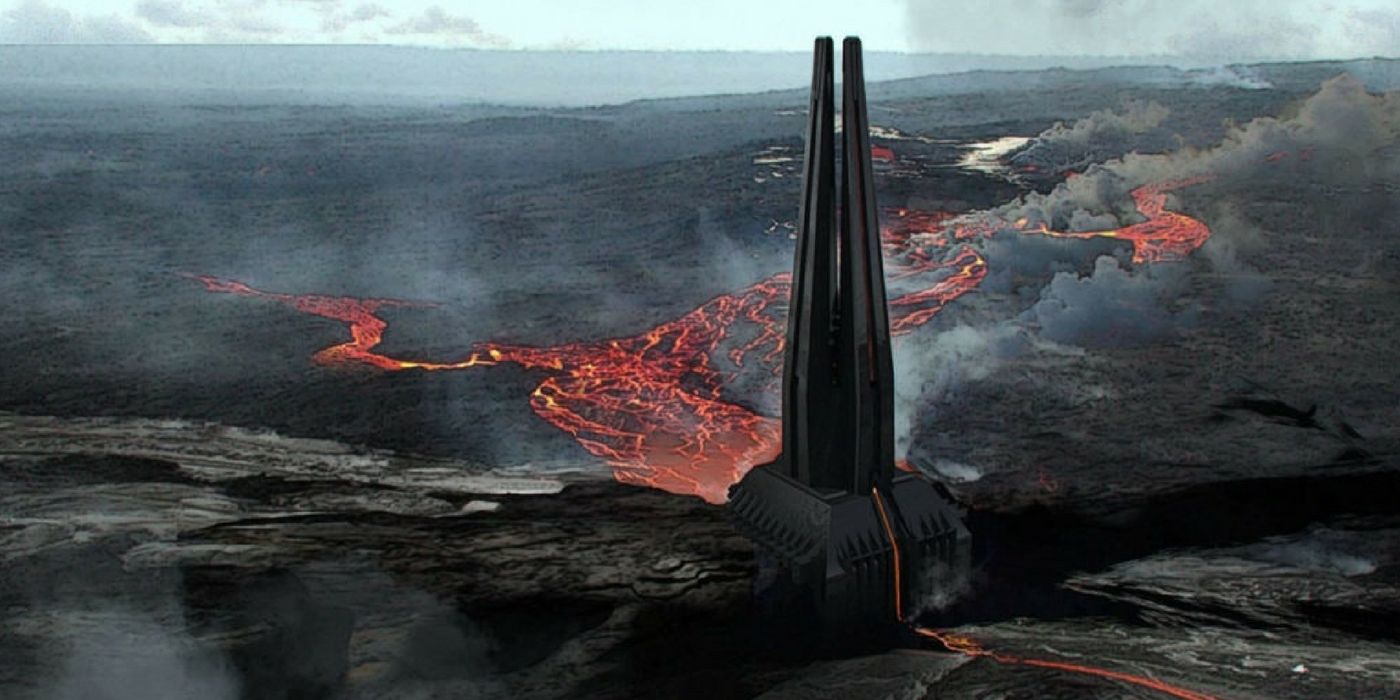[Reposted from January for #StarWarsDay. May the fourth be with you!]
With the release of Rogue One: A Star Wars Story last month, fans of the Star Wars franchise have been given a taste of the range of storytelling that the modern Star Wars universe has to offer: core episodes, books, comics, animated shows, games, and spin-off films.
Like other major Hollywood franchises right now, Star Wars is utilizing the shared universe model of storytelling, incorporating all these stories into a much larger cohesive sandbox, but Star Wars’s shared universe isn’t quite like other shared universes. It takes things a step farther with its non-movie properties, bringing books, movies, television, and more together to create a singular universe in which it’s all truly connected. As a result, the common continuity shared by all Star Wars stories has created the most cohesive shared universe yet.
R.I.P. Expanded Universe
Before Disney purchased Lucasfilm, Star Wars canon was a complicated thing. Over the course of several decades, the Expanded Universe of books, comics, and games filled in almost every story gap imaginable, giving a detailed backstory to every character (no matter how minor), clarifying perceived plot-holes, explaining the intricacies of various technologies, filling in the gaps between (and during) the movies, and creating new characters and stories spanning the full spectrum of the Star Wars timeline - from several millennia before The Phantom Menace to centuries after Return of the Jedi.
While avid fans might try to say the Expanded Universe was a fixture of core Star Wars canon, the truth is that it was always an alternate universe, and its adherence to continuity was often shaky at best. Sure, the stories were sanctioned by George Lucas (and he occasionally had input on their direction), but when it came time to make the prequels, he paid little heed to what the Expanded Universe had already established. He incorporated some elements from the Expanded Universe, but he also didn't hesitate to outright contradict other aspects, such as Timothy Zahn’s description of The Clone Wars in his Thrawn Trilogy. Lucas also commented on the Expanded Universe several times, emphasizing on more than one occasion that the stories outside of the ones he wrote, produced, or directed took place in a “separate world,” solidifying the the Expanded Universe as an alternate universe.
Canon aside, the truth is the Expanded Universe so thoroughly filled up the Star Wars timeline that there was no oxygen left for new or original stories to breathe in a post-Disney world. Keeping the Expanded Universe continuity would mandate that future stories either have a minimal connection to the characters audiences know and love, or simply retread events already established by the Expanded Universe - both of which would alienate large swaths of the movie-going public.
The Expanded Universe had to go.
Enter: The Lucasfilm Story Group
The designation of the Expanded Universe as the non-canonical “Legends” universe doesn’t mean Lucasfilm is blind to what that content achieved. Hardcore fans hungry for more Star Wars created a market for the franchise off the big screen with the EU. Desiring to capitalize on that market, while still ensuring that all Star Wars stories were “intuitively and intentionally connected,” Lucasfilm President Kathleen Kennedy called for a centralized Lucasfilm Story Group to help maintain cohesion in future storytelling. The Story Group works closely with all authors, screenwriters, artists, and other creatives to ensure every Star Wars story can be told without contradicting the depictions of characters, events, technology or any other bits of detailed encyclopedic minutiae that make up the fabric of the galaxy far, far away.
This interconnected narrative isn’t only fulfilling for continuity hounds, but it also maintains consistency within the Star Wars brand so audiences know they can rely on knowledge they gleaned from past events, unlike other cinematic shared universes like Transformers or X-Men. While those universes maintain basic story connections throughout, both franchises are full of continuity violations. X-Men even wiped the slate clean with Days of Future Past to account for the many contradictions in the X-Men timeline.
To be fair, the Transformers franchise recently created a writers group resembling the Lucasfilm Story Group in concept, and the X-Men franchise is similarly guided by writers and producers like Simon Kinberg and Lauren Shuler Donner, but the former franchise hasn't had an opportunity to prove the fruits of its labor yet, and the latter unfortunately seems to be (ironically) repeating history.
The better examples of this model appear to be the Marvel Cinematic Universe, the DC Extended Universe, and The CW’s DCverse, but even these franchises run into issues. The MCU has seen extended success in spreading content across the big screen, broadcast television, and Netflix, but it’s often criticized for keeping these three universes too separate; the DCEU has yet to land a critical hit - despite strong support from chunks of its fan base; and the CW’s “continuity” heavily relies on alternate timelines and the multiverse, with only one of its four shows, Arrow, maintaining a static time and place in the multiverse. On top of that, none of those properties have found a reliable way to account for the whereabouts of non-starring heroes during any major crisis outside of team-up stories.
Not only does Star Wars answer those questions, it does it while incorporating all its flavors of storytelling - movies, spin-offs, animated shows, comics, novels, and games - into one big happy continuity.
Next Page: [valnet-url-page page=2 paginated=0 text='It%27s%20All%20Connected']
It’s All Connected
Lucasfilm launched this new era of interconnected stories with a bang, titling many of the first installments of this new canon leading up to Episode VII under the banner of "Journey to the Force Awakens." These books and comics all teased readers with clues about the events of the film, and fans were ravenous for information about the new era of Star Wars during a very restrained marketing approach for franchise's cinematic rebirth.
That initial push may have been a bit on-the-nose with it's promises of connective tissue, but the full effects of the Story Group can be seen on display in Rogue One’s numerous Easter eggs and tie-ins to other stories in a far more subtle fashion. Outside of simple references and Easter eggs, Rogue One included one particularly big reveal that demonstrates just how well established this universe is behind the Story Group's closed doors: Darth Vader’s Mustafar castle.
The concept of Darth Vader having a castle is nothing new - it’s another element of Legends continuity being brought into modern canon by Rogue One, but evidence for the existence of Vader’s toasty getaway has been apparent for some time, and any completionist superfan should have already known about it simply by following a bread crumb trail.
In the Star Wars Rebels season 1 finale, “Fire Across the Galaxy”, Wilhuff Tarkin plans to take Kanan Jarrus to Mustafar, a location he says “never fails to extract a confession." If that wasn’t obvious enough, when Hera finds out Kanan is being transferred there, she says Mustafar is “where Jedi go to die.” Finally, Tarkin’s Star Destroyer is destroyed in orbit over Mustafar, forcing him to flee in a shuttle, but when he returns to Lothal, the shuttle has a new passenger: Darth Vader. Any one of these hints could potentially be dismissed as innocuous, but taken together they paint a fairly clear picture.
Even if those hints from Rebels aren’t crystal clear, the very first chapter of one of the very first novels in new canon, Star Wars: Aftermath, states: “After all, didn’t Mustafar hold some importance to the Imperial leadership? Rumors said that’s where Vader took some of the Jedi long ago. Torturing them for information before their execution.”
While the trail of dots connecting Aftermath to Rebels to Rogue One and the reveal of Vader's Castle are a great exhibition of the Story Group’s impact, it’s only one example, with Saw Gerrera’s inclusion in The Clone Wars, Rebels, Catalyst, and Rogue One serving as another. The galaxy far, far away is growing bigger all the time, and major tie-ins, like Episode VIII director Rian Johnson’s request to include the “Napkin Bombing” in the Leia-centric novel, Bloodline, are only going to see bigger and bigger payoffs as more Star Wars stories arrive, giving fans more incentive than ever to dive deep into non-movie material with hopes of uncovering big clues for future films - looking for the next "Vader's Castle" in Star Wars continuity.
---
Do you have any personal favorite example of the success of the Lucasfilm Story Group’s impact on Star Wars? Let us hear about it in the comments!




